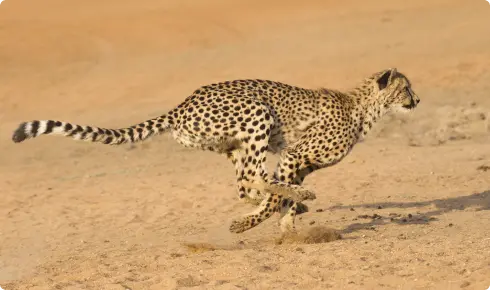Promoting “organizational mindfulness” can help foster creativity and innovation – two indispensable elements for a company’s success and sustainability, says Faisal Hoque.
According to Canadian psychologist and researcher Dr. Scott Bishop, mindfulness consists of two primary features:
- The regulation of attention to maintain focus on your immediate experience.
- Approaching the phenomena of our experiences with curiosity, openness, and acceptance.
As it happens, that describes the fertile soil for creativity and, by extension, innovation.
You can’t have innovation without creativity. And creativity, by its nature, is an internal process; you have to understand what’s happening inside yourself in order to be sustainably, reliably creative. In other words, mindfulness enables creativity and innovation.
Creating the conditions for creativity
While you can’t force creativity to happen, you can be rigorous and systematic about how you create the right conditions to generate that process.
One way to develop the discipline of curiosity is to become more deliberate about training yourself to directly participate in your experiences – otherwise known as living more mindfully.
You can also practice being intentionally omnivorous, as chef-designer-photographer-philosopher-entrepreneur Emilie Baltz calls it. Being intentionally omnivorous means giving yourself a breadth of experiences to draw upon and being open and flexible about those experiences.
Perhaps the quintessential model of creativity is Leonardo da Vinci. Beginning as a painter – before he became a sculptor, engineer, anatomist, architect, and a painter again – da Vinci was long trained in experiencing and appreciating the natural world. This observational enthusiasm informed all of his work. He once wrote:
“I roamed the countryside searching for answers to things I did not understand. Why shells existed on the tops of mountains along with the imprints of coral and plants and seaweed usually found in the sea. Why the thunder lasts a longer time than that which causes it, and why immediately on its creation the lightning becomes visible to the eye while thunder requires time to travel. How the various circles of water form around the spot which has been struck by a stone, and why a bird sustains itself in the air. These questions and other strange phenomena engage my thought throughout my life.”
His ability to connect the dots came from an intent focus on immediate and present experience.
Workplace Mindfulness for Innovation
Although mindfulness frequently incorporates meditation, it also involves a form of mental discipline that focuses on the here and now. As described in my book Everything Connects – Cultivating Mindfulness, Creativity, and Innovation for Long-Term Value (Fast Company 2022), mindfulness is a “fitness program for consciousness”, one that grows and strengthens with repeated practice.
Mindfulness fosters creativity and innovation in the workplace by:
- Reducing and managing stress more effectively. The result is not merely greater productivity but also a sharpened focus, better decision making and a more attuned and comfortable attitude toward different approaches and fresh ideas – cornerstones of both creativity and innovation.
- Reframing perception of risk. A mindful approach sees challenges, and even mistakes, as opportunities for learning and growth rather than outcomes that mean nothing more than frustration and disappointment.
- Improving leadership skills. Leaders can effectively turn off the mind’s busy setting to notice and respond to what’s happening in the moment instead of defaulting to reactive habits.
While organizations can promote mindfulness on an individual level by offering programs such as meditation instruction, creativity and innovation can also be fostered through what I describe as “organizational mindfulness”. In a nutshell, this refers to not just an awareness of an organization’s resources, including its people, but also a focus on connecting with its market in creative an innovative ways through the prism of mindfulness. This can include:
Exercising the power of “combinational creativity”. Here, an organization rearranges talent and resources from different sectors, thereby connecting ideas and even entire disciplines that would normally be far removed from one another. In so doing, a company’s existing resources can be creatively reframed and redirected to promote fresh synergy. This establishes a potentially powerful relationship between two previously unconnected entities and the ideas and thinking that they embody.
Here’s another mindfulness technique that you can practice any time of the day or night. It’s the acronym S.T.O.P. which stands for:
- S – Stop what you’re doing, if only for a moment
- T – Take a breath, slowly and completely
- O – Observe. How do you feel? What are you thinking about right now at this very moment in time?
- P – Proceed. Return to what you were doing, but take notice. Do you feel refreshed? Can you see what you were doing from a different perspective?
That’s all there is to it. The S.T.O.P. method gives you a break to reconnect with yourself and what’s going on around you. Scientific estimates show that 95% of our behavior is on autopilot – neurological “shortcuts,” if you will. S.T.O.P. is one simple way to use mindfulness to short-circuit that ingrained, knee-jerk thinking or reaction.
Taking the same idea in a different direction, rotating personnel from one position to another. This fosters varied experience and curiosity, a proven predictor of creativity. Further, it supports organizational mindfulness; not only do people develop a deeper and more profound understanding of and appreciation for the organization as a whole, but individual roles and positions take on a greater meaning rather than an arbitrary job that might seem to have been created out of the blue for no particular reason.
Looking at positions within the company in the context of creativity and innovation. Reframe roles to reflect various stages that encompass both innovation and creativity. For instance:
– Ideation roles: Devise, discover, invent, and share ideas.
– Guiding roles: Manage, navigate, oversee, and develop ideas further.
– Building roles: Implement, execute, and transform ideas into actual processes.
– Improving roles: Expand, reduce, and tinker with existing products and processes.
This mindful approach further systemizes the creative and innovative processes while boosting awareness of individuals’ roles in and connection to the organization as a whole.
Working toward greater “humanization”. Creativity and innovation derive from interactions with others working within a structure. The more that structure can foster more positive work experiences and greater interpersonal bonds, the more innovative and creative everyone can be. From systems designed to foster varied experience and curiosity such as those described above, to programs such as remote work and other types of flexible work arrangements, consider what presence the organization has in the people’s lives which comprise it. How can their personal and professional goals be more completely aligned to foster a feeling of being a part of something greater than themselves?
To those unfamiliar with it, mindfulness might seem like just another New Age flight of fancy, destined for ultimate irrelevance and even derisive chuckles as former devotees wonder how they heck they ever “fell” for that. But for those who’ve experienced it firsthand, mindfulness carries very real and significant benefits, not the least of which is a boon to the creativity and innovation which affords the best opportunity possible for companies of all sorts to build long term value.
Consider adding mindfulness to your tool bag of essential business skills.
Original Article @IMD.
Copyright (c) 2022 by Faisal Hoque. All rights reserved.
















